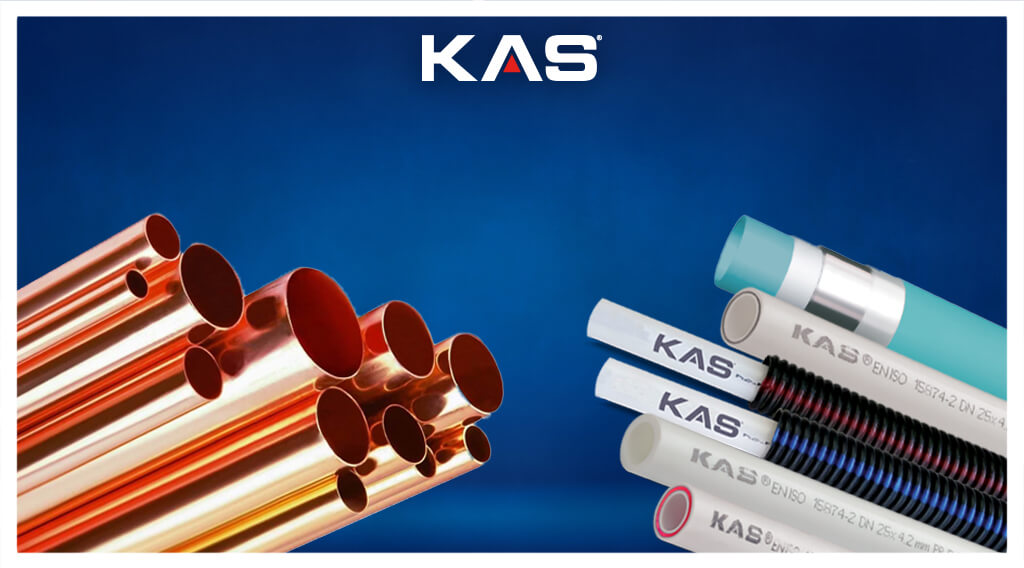PPRC Pipe or Copper Pipe? Which Is the Right Choice for Your Installation?
The choice of pipe type for residential or commercial installations directly affects the durability of the system, water quality, energy efficiency, and maintenance costs. Today, PPRC pipes and copper pipes are the two most commonly preferred materials. But which one is the right choice for your project?
In this article, we examine in detail the technical properties, advantages and disadvantages, areas of use, and selection criteria of PPRC and copper pipes.

What is PPRC Pipe?
PPRC (Polypropylene Random Copolymer) is a type of plastic pipe that is resistant to high temperature and pressure, and chemically inert. It is generally produced in white or green color.
Key Features:
Lightweight and easy to transport
Corrosion resistant
Easy installation (via fusion welding)
Low thermal conductivity (reduces heat loss)
Areas of Use:
Hot and cold water installations
Heating/cooling systems
Chemical fluid transportation
Industrial installations
What is Copper Pipe?
Copper pipes have been used in the plumbing industry for decades, known for their durability and natural antimicrobial properties.
Key Features:
High mechanical strength
Operates within a wide temperature range
Natural bacteria-resistant properties
Long lifespan
Areas of Use:
Drinking water installations
Natural gas pipelines
Cooling and air conditioning systems
Firefighting lines
Comparison of PPRC and Copper Pipes
| Feature | PPRC Pipe | Copper Pipe |
|---|---|---|
| Durability | Medium-High (temperature limit ~95°C) | Very High (up to 300°C) |
| Weight | Light | Heavy |
| Installation | Easy (fusion welding machine) | Medium-Difficult (requires soldering or press fitting) |
| Corrosion Resistance | Excellent | Good (sensitive to acidic waters) |
| Cost | Low-Medium | High |
| Thermal Conductivity | Low (less insulation needed) | High (insulation required) |
| Fast Installation | Yes | No |
When Should Each Be Preferred?
PPRC Pipe is Recommended When:
For hot/cold water installations in residential projects
For budget-friendly solutions
For heating/cooling systems
For industrial lines carrying chemical fluids
Copper Pipe is Recommended When:
For projects requiring high mechanical strength
For natural gas lines
For systems operating under high temperature and pressure
For facilities where antimicrobial properties are critical (hospitals, food industries)
Installation and Maintenance Considerations
During PPRC pipe welding, correct heat and duration must be applied; otherwise, leaks or blockages may occur at joints.
Copper pipes must be soldered by experienced technicians and protected with insulation against external factors.
In both materials, a pressure test must be carried out after installation, and leak checks should be performed before commissioning the system.
KAS PPRC Pipe and Fittings Solutions
KAS is one of the leading brands in the construction plumbing sector, known for its PPRC pipes and fittings that meet high-quality standards.
KAS PPRC systems:
Resistant to high temperature and pressure
Corrosion resistant
Hygienic inner surface
Leak-proof fittings
Certified with TSE and ISO quality standards
Additionally, KAS offers complete plumbing solutions including valves, flexible hoses, underfloor heating systems, and faucet-mixer solutions. This allows you to meet all installation needs under a single brand.
Both PPRC and copper pipes can provide years of reliable service when installed correctly and sourced from quality products. However, it is important to make your choice based on your intended use, budget, and technical requirements.
To ensure durability, leak-proof performance, and quality, KAS PPRC pipes and fittings are a reliable choice for your projects.

 English
English